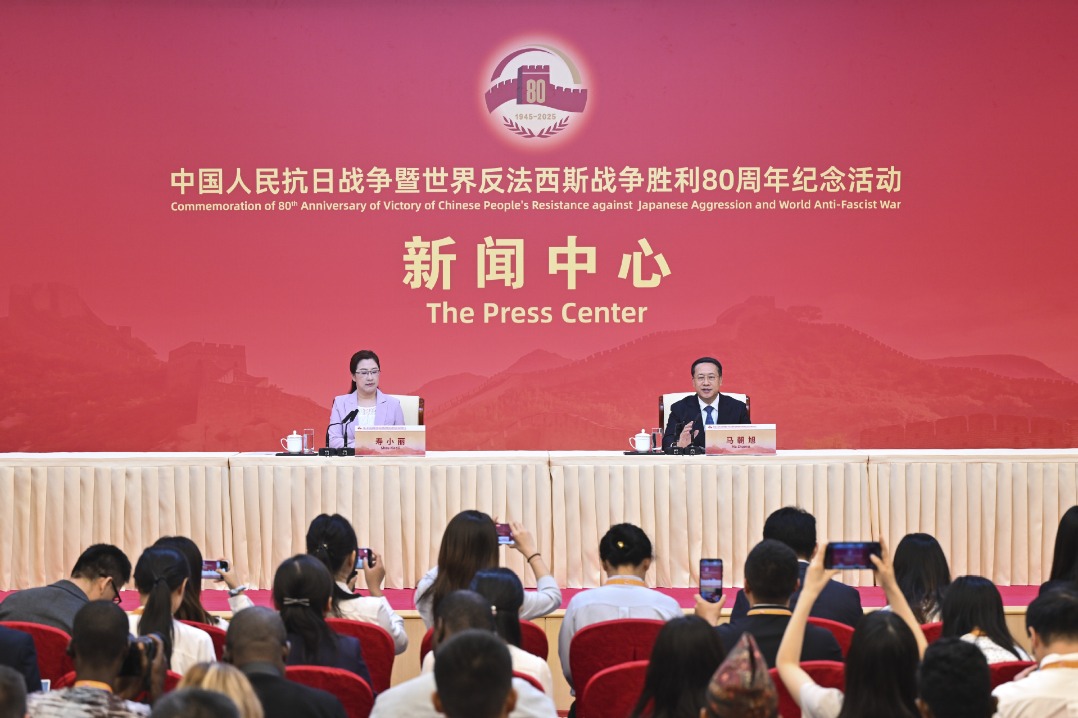Macro policies can mend structural imbalances

Economic rebalancing, structural recovery, development and transitions, rather than pursuit of a large size of economic aggregate, are the main goals of China's macroeconomic policies this year.
We should attach importance to both GDP growth and economic structural adjustment, which is a major direction of our country's macroeconomic policies.
Last year, governments around the world put emphasis on preventing economic recessions and promoting an economic rebound. Therefore, at that time, the main target of policies was to maintain fairly high GDP growth. That is why, we saw unprecedented fiscal and monetary stimulus.
The global economy contracted by 3.3 percent in 2020. After the recession, a new imbalance between economic structure and activities has emerged, as the COVID-19 pandemic has had different effects on different industries, residents and regions.
The new imbalance is reflected in various aspects, such as the imbalance between virtual economy and the real economy, which affected the employment of women and low-income, low-tech young people more seriously than the average labor force during the pandemic.
Policymakers should pay special attention to structural changes in the economy in different countries, as well as a series of changes in different domestic industries and different employed groups.
China posted 2.3 percent GDP growth in 2020 and became the only major economy that reported growth. But we also saw that the imbalance in the overall economic activities has further increased.
On the supply side of the economy, although the industrial sector rebounded strongly, the services sector rebounded weakly due to its feature of close person-to-person contact.
As China is making a transition from a manufacturing economy to a services-led economy, its manufacturing and industrial sectors have declined step by step since they peaked in 2012-13. The country is also gradually forming a big pattern of a consumption-led domestic market that boosts economic growth.
However, the pandemic brought reverse shock to the fundamental economic structure and the trend of economic activities, which means we need to think about the way forward.
While forcefully promoting economic rebound, we must attach greater importance to the economic structure and have our policies focus more on structural recovery. That is why, rebalancing will become extremely important.
At the start of this year, China entered a new transition of its economic structure, with three major structural changes.
The first change is aging. Its speed and size will far exceed our imagination. People aged 65 and over now account for 12 percent of China's population. In 2050, its net population increase is expected to be above the age of 60, while the country will see a net decline in the population under 60.
Aging and longevity will bring huge structural changes, which will fundamentally change supply and demand of the economy and also the financial sector.
If we look at Japan's experience, data since 1994 show that the manufacturing, construction and financial sectors accounted for a smaller portion of its GDP, whereas the healthcare, science and technology, and communications industries expanded.
Aging also caused a decrease in potential economic growth, low labor productivity and low inflation.
The second major structural change is related to China's commitment to achieve carbon neutrality by 2060. Last year, coal consumption accounted for about 57 percent of China's primary energy consumption.
To cut the portion to around 6 percent, the country must take the path of green development, which is a fundamental change in economic development mode, backed by a technological revolution.
China will say goodbye to the fossil fuel-based industrial development track since the first Industrial Revolution that began in Britain and switch to the green growth-based development track that is unprecedented.
Compared with Europe, China faces greater challenges with its goal to achieve carbon neutrality. Its annual GDP per capita exceeded $10,000 for two consecutive years, but the figures were just slightly above $10,000.
Besides, the country has decided to reduce carbon emissions despite the fact that energy consumption is a necessary condition for achieving growth, not to mention that there are only 40 years left for China to realize its goal.
This is a huge structural and industrial change that will reshape the manufacturing sector and lead to changes in economic and human activities.
The third change is digital transformation. China-US trade frictions intensified amid the COVID-19 outbreak and gradually evolved into technological and global competition. China is left with no other choice but to take the path of endogenous technological innovation development.
Digitization progressed rapidly in many sectors, including manufacturing, commerce and communications. The process of digitization will fundamentally change a nation's core competencies and resource endowments, which were defined by Adam Smith, an 18th-century Scottish economist and philosopher.
As data become resources, and science and technology capacity and algorithms become labor productivity, a fundamental change will take place in a country's competitive positioning.
China is a major power that generates a vast amount of data, as the number of its netizens reached 989 million by the end of 2020, according to the National Bureau of Statistics.
Currently, the average monthly internet traffic per capita in China is 9 gigabytes, 50 percent higher than that of OECD countries. We estimate that the number will increase to about 100 gigabytes in 2030.Our country is also pushing harder for the development of the internet of things. Both people and things are generating countless data, which become resources and will become assets.
Taking the above three changes into consideration, we will find that China's macroeconomic policies are particularly important at this point.
First of all, the macro policies will continue to lead the country out of the COVID-19 crisis and promote sustainable growth on a new basis. At this stage, what is important is the structure and quality of the economy, rather than economic aggregate.
This year, we need to mend structural imbalances caused by the pandemic, such as the imbalance among different sectors, regional imbalance, and the imbalance between the real economy and the virtual economy. We must return to our own framework of economic structure and development, to prevent the crisis from becoming a turning point in structural changes and making a long-lasting scar.
In this sense, China's policymakers showed great wisdom by setting a GDP growth target of over 6 percent for this year. It means they have realized the importance of economic structure and quality and have taken a crucial step forward.
Under the circumstances, China's monetary policy should remain relatively loose to maintain adequate liquidity. It is particularly important for China to adopt well-targeted fiscal policy measures to deliver solid outcomes, so that the country will fix structural imbalance caused by the pandemic and also readjust its structure to lead economic development in the future.
This year is an important year in China's history because it is the beginning of the 14th Five-Year Plan (2021-25). The tone of macroeconomic policies will lay the ground for the country to head for a new development pattern of green and sustainable growth, which is a challenge to, and a target of, the policies this year.
The writer is chairman of the National Institute of Financial Research at Tsinghua University in Beijing and former deputy managing director of the International Monetary Fund. The views are compiled from his speech at the Tsinghua PBCSF Chief Economists Forum 2021.
The views don't necessarily reflect those of China Daily.

Today's Top News
- Xi chairs meeting on ideological work, draft ethnic unity law
- Digital tech boom offers opportunities
- Expo attracts all Arab nations
- Uzbekistan and SCO: Cooperation for global peace and prosperity
- Industrial upgrade pivots on digital tech
- SCO summit media center begins operation






























